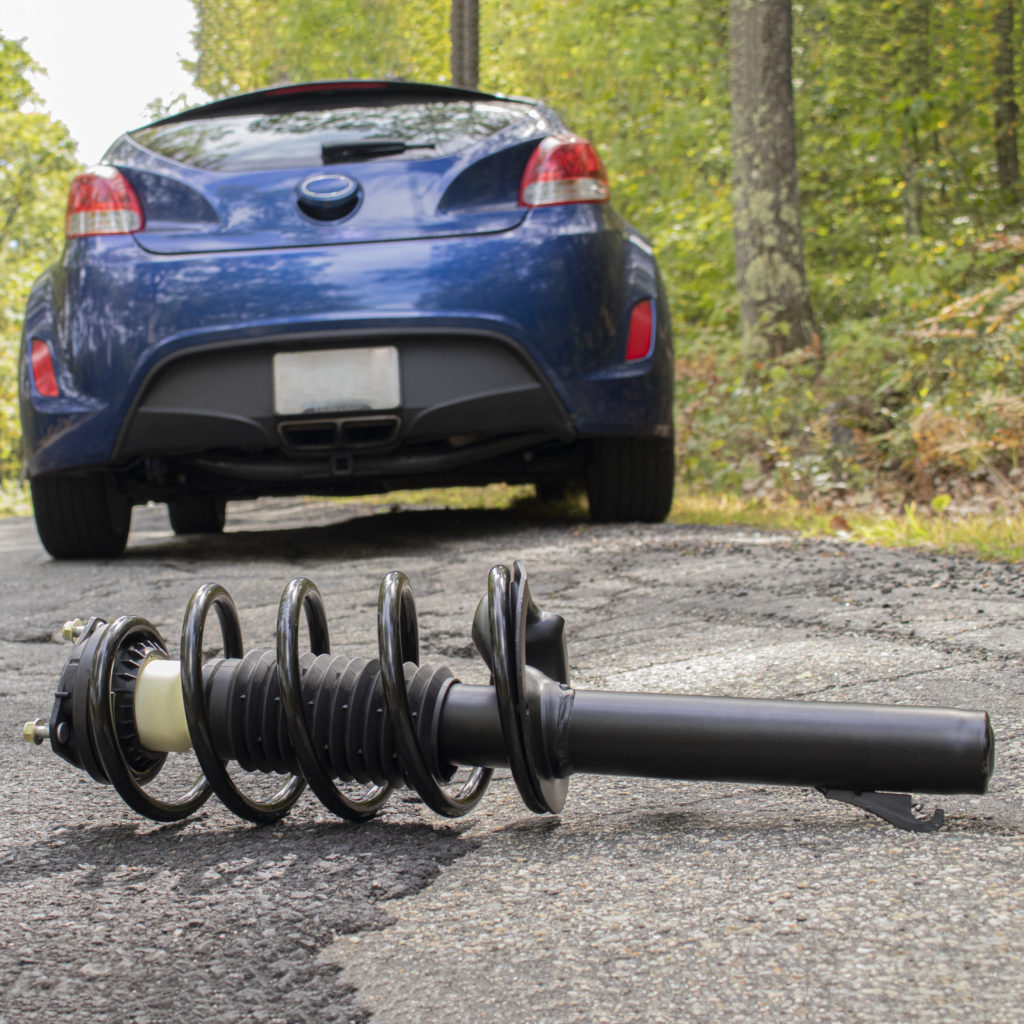
You’re driving down a back country road at night. Over the howls of the wind, you can hear a rattle and clunking. Is your car haunted or do you just need to fix your suspension? Here are 5 signs that your shocks or struts might be ready to pass on to the great beyond:
1. A Sinking Feeling
Worn springs can lead to decreased ride height. Check your ride height and then compare it to specifications for your model. If you’re riding too low, it’s time to replace your shocks and springs. You might also notice that your car bottoms out on rough roads, speed bumps, or when you’re coming into or out of your driveway.
2. It’s Alive!
You might notice that your ride is livelier that you’d like it to be. A bouncy ride, swaying body or shimmying steering wheel aren’t signs that your car is possessed. Rather, they hint that your shocks or struts don’t provide the support and control that they used to. Another sign might be that your car’s nose drops down when you hit the brakes. This is known as brake dive and it indicates that your front shocks are worn.
You can also use something called the jounce test to check your suspension. Push down on the hood or trunk. The car should bounce back and then stabilize. If it keeps bouncing, that’s a bad sign.
3. Mysterious Markings
Worn shocks or struts can throw off your wheel alignment. If your alignment is off you might get strange tire wear patterns – particularly tire cupping, where the tire gets worn in a scalloped or dimpled pattern.
4. Spooky Sights and Sounds
Unlike poltergeists, suspension problems can sometimes be seen with the naked eye. Check out your struts and see if they have any visible signs of rust and wear. Be especially sure to check around the mounts and bushings where the struts attach to the body or the wheel. You’ll also want to check for fluid leaks.
Your ears can also play a role in helping you identify worn shock absorbers. Listen for rattling or clanking sounds when you take a turn or when you hit a bump in the road.
5. Ancient Age
Like many car parts, shocks and struts wear out over time and with use. 50,000 miles is the typical lifespan for a shock, but if you put a lot of strain on your shocks, by driving rough roads or towing for example, they might wear out sooner.
What can you do if you experience any of these problems? Replacing a shock or strut is not an overly complicated job, although it can sometimes take some work to get access to all the bolts. Luckily for you, we have videos showing how to replace shocks and struts on many models. We recommend replacing shocks and struts in left-right pairs so that they’ll give you an even ride. Even better, you can replace all four shocks at once. To make things easy, we carry individual shocks, as well as pairs and sets of four.
Written by Dan Smolinsky.